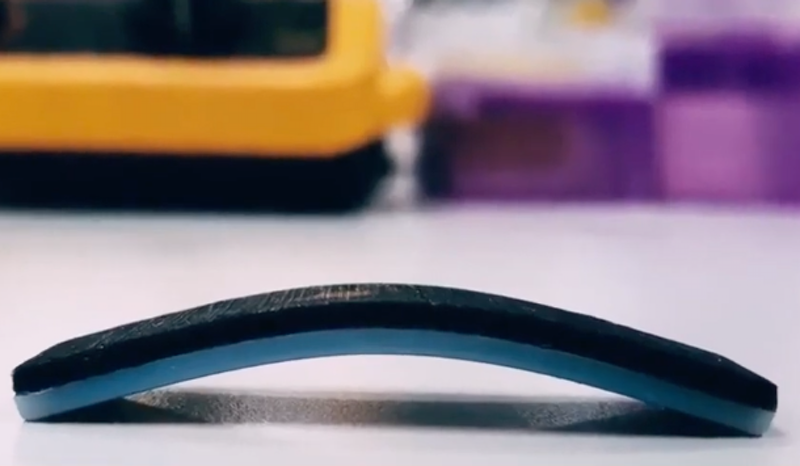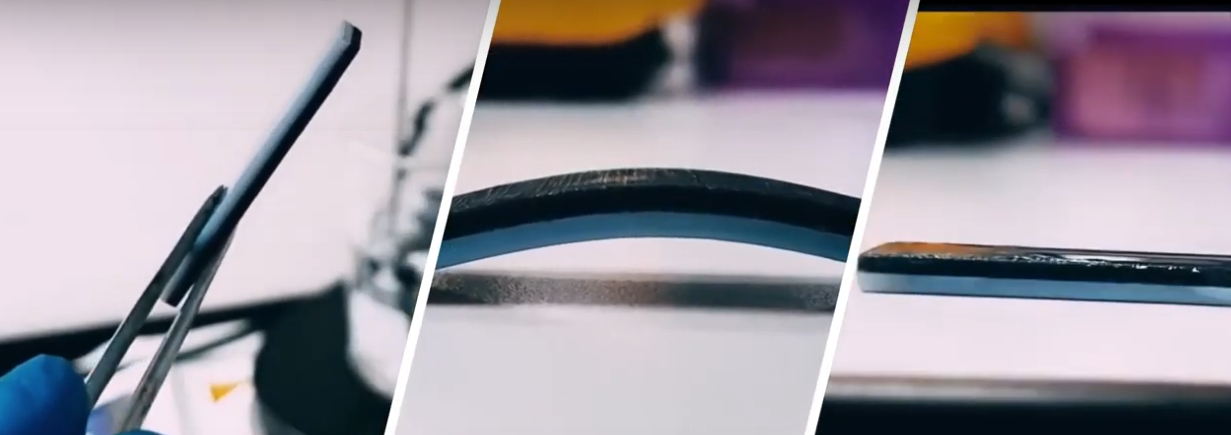A collaborative research project between Singapore University of Technology and Design (SUTD) and Nanyang Technological University (NTU) has resulted in a 3D printed material changing its shape and back again numerous times without any electrical input.
The study is titled ‘Preliminary Investigation of the Reversible 4D Printing of a Dual-Layer Component’ and it is co-authored by Amelia Yilin Lee, Jia An, Chee Kai Chua and Yi Zhang. It was published in the journal Engineering in December of 2019.
Reversible 4D printing
When the shape of a 3D printed object changes over time, it is referred to as 4D printing. Reversible 4D printing refers to the ability to then change back to the original 3D printed shape. The initial changes in shape are usually caused by either heat or water, but the reversion often requires manual input in the form of stretching or pulling, which can be time-consuming and arduous.
Researchers have given automated reversible 4D printing some attention in recent years, with hydrogel being the main stimulus used to achieve reversibility without human intervention. Hydrogel lacks mechanical strength, however, so it is limited in its applications. Further work has utilized various layers of material as an alternative to hydrogel, but the procedure was only made more tedious.
The work by SUTD and NTU addresses these challenges by enabling reversible 4D printing without the need for hydrogel or human input.

VeroWhitePlus and TangoBlackPlus
The research used the materials VeroWhitePlus and TangoBlackPlus, which are readily available and compatible with the 3D polyjet process. The team first proved that these materials were able to retain considerable mechanical strength during and after changing shape.
The process involved swelling the elastomer with ethanol to replace the function of hydrogel swelling. This was to induce stress on the transition material. When heated, the transition material changed its shape to its second form. When the ethanol evaporated and the elastomer was dry, a secondary heating of the transition material reverted it back to its original shape, as the elastomer pulled the transition material back due to elastic energy stored in it after drying. The elastomer served a double function in the work, as it was used both to induce stress in the programming stage and to store elastic energy in the material during reversion.
The study also concluded that the reversion was more precise when using the present method, compared to manually forcing the object to revert. Reversible 4D printing is very much in its early stages but the collaborative project provided great insight into the mechanisms behind automated reversible 4D printing. The team hopes to carry on trialing the technique with new materials.
“While reversible 4D printing in itself is a great advancement, being able to use a more robust material while ensuring a more precise reversal during shape change is revolutionary as it allows us to produce complex structures that cannot easily be achieved through conventional fabrication. By relying on environmental conditions instead of electricity, it makes it a game changer across various industries, completely changing the way we design, create, package and ship products,” said Professor Chua Chee Kai, lead researcher and Head of Engineering Product Development in SUTD.

4D printing, by incorporating the next dimension, is naturally the next step up from 3D printing. For 4D printing to match the sophistication of current 3D printing technology, however, researchers must hone the ability to create smooth and complex surfaces over a given time period. Harvard University scientists have previously experimented with smooth and complex surfaces by 4D printing structures that, when placed in saltwater, take on the shape of a human face. Elsewhere, at Rutgers University, researchers have created bioinspired, programmable microneedles that enhance tissue adhesion using projection micro-stereolithography.
The nominations for the 2020 3D Printing Industry Awards are now open. Who do you think should make the shortlists for this year’s show? Have your say now.
Subscribe to the 3D Printing Industry newsletter for the latest news in additive manufacturing. You can also stay connected by following us on Twitter and liking us on Facebook.
Looking for a career in additive manufacturing? Visit 3D Printing Jobs for a selection of roles in the industry.
Featured image shows a reversible 4D printed structure. Photo via SUTD.



